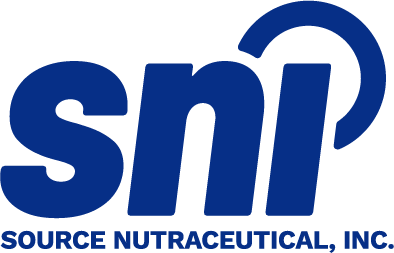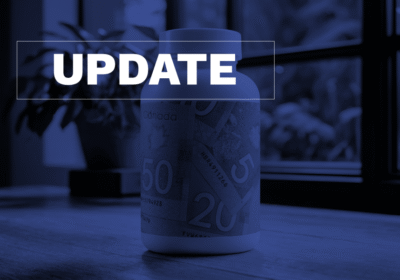Sunscreen is more than a summertime staple; it’s a frontline defence against premature aging, sunburn, and skin cancer. As consumer awareness around sun protection continues to grow, so does the demand for innovative, high-quality sunscreen products. But behind every tube on a drugstore shelf lies a rigorous regulatory journey.

In Canada, launching a sunscreen product isn’t as simple as developing a standout formula. Whether you’re formulating with mineral filters or synthetic actives, your product must meet Health Canada requirements before it enters the market. From choosing the right regulatory pathway to securing licenses and validating label claims, there’s a lot to get right—this guide breaks it all down.
Please note that this blog post is a high-level overview of the requirements for licensing and selling sunscreen products in Canada. Reach out to the SNI team for additional information or refer to Canadian Regulations for additional information!
What Are the Regulatory Pathways for Licensing Sunscreen in Canada?

In Canada, sunscreens are regulated under two primary frameworks, each with its own licensing requirements and pre-market obligations: the Natural Health Product (NHP) Framework and the Non-Prescription Drug (NPD) Framework. Determining the appropriate regulatory pathway for a sunscreen product depends on several key factors, including the type of active ingredients, the intended product claims, and the overall formulation. Ideally, these considerations should be addressed early in the product development phase to ensure a smooth regulatory process.
Natural Health Product (NHP) Pathway
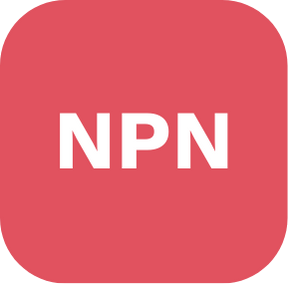
Sunscreens that rely on mineral-based active ingredients, such as Titanium Dioxide and/or Zinc Oxide, are typically regulated as Natural Health Products (NHPs). These ingredients act as physical blockers, providing broad-spectrum protection against both UVA and UVB radiation. Products that fall under this pathway must undergo safety, efficacy, and quality assessments and are required to obtain a Natural Product Number (NPN) prior to being marketed and sold in Canada.
This pathway is often preferred for products marketed as “natural,” “organic,” or “mineral sunscreens,” and may allow for a slightly more streamlined approval process compared to the NPD pathway, provided the product meets all NHP regulatory standards.
Non-Prescription Drug (NPD) Pathway

Sunscreens formulated with synthetic chemical UV filters fall under the Non-Prescription Drug Framework (NPD). Common ingredients regulated under this pathway include Avobenzone, Bemotrizinol, Oxybenzone, Sulisobenzone, Dioxybenzone, among others. These chemical filters absorb UV radiation and often require more rigorous safety and efficacy testing.
Products in this category are classified as non-prescription drugs and must obtain a Drug Identification Number (DIN) from Health Canada before they can be legally sold. The DIN confirms that the product has been evaluated for safety, efficacy, and quality according to drug standards.
Choosing the Right Pathway

Choosing the correct licensing pathway is essential for compliance and successful market entry. This decision should align with the product’s formulation and marketing strategy, as well as the regulatory classification of the active ingredients involved. In some cases, reformulation may be necessary to shift from one framework to another, depending on business goals or regulatory constraints.
Health Canada’s Regulatory Role
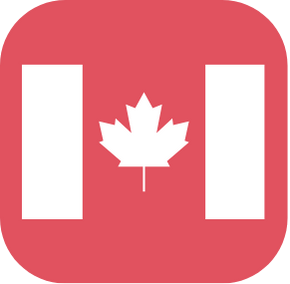
Health Canada is the federal authority responsible for regulating sunscreens in Canada to ensure they are safe, effective, and accurately labelled. Health Canada evaluates detailed product information, including ingredient safety, SPF efficacy data, and label claims, to ensure compliance with Canadian standards. Companies involved in manufacturing, packaging, labelling, or importing sunscreens must also obtain a site licence and adhere to Good Manufacturing Practices (GMP), information and applications for which are reviewed and approved by Health Canada.
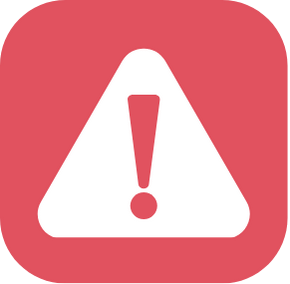
In addition to pre-market approval, Health Canada plays a key role in post-market surveillance. This includes monitoring adverse reactions, conducting product inspections, and initiating recalls or enforcing corrective measures when necessary. The agency also sets strict labelling requirements, mandating clear disclosure of SPF values, directions for use, and safety warnings. Through these measures, Health Canada protects public health by ensuring consumers have access to sunscreens that are both safe and reliable, while holding manufacturers accountable for product quality and regulatory compliance.
How to License a Sunscreen as an NHP
To license a sunscreen under the NHP framework, the following steps are typically required:
Determine Eligibility Ensure that the sunscreen formulation contains only approved medicinal and non-medicinal ingredients listed in Health Canada’s Natural and Non-Prescription Health Products Ingredients Database (NNHPID). If certain ingredients are not listed, your product can still be classified as an NHP, but additional evidence will be needed to support its safety and efficacy, showcasing its suitability for this product category.
Prepare a Product Licence Application (PLA): Once you’ve finalized your sunscreen formulation and confirmed that it qualifies as a Natural Health Product (NHP), the next step is to prepare and submit a Product Licence Application (PLA) to Health Canada. Depending on the product’s medicinal ingredients and proposed claims, your submission will fall under Class I or Class III—with Class III typically applying when scientific evidence is needed to support more complex claims.
It is the applicant’s responsibility to correctly identify the application class and to prepare a complete submission package in line with class-specific requirements.
Core Information Required in the PLA (Varies by Class):
- Medicinal Ingredients: Full details on each active ingredient, including its source and concentration.
- Non-Medicinal Ingredients: A list of inactive ingredients with their function in the formulation.
- Proposed Health Claims: Statements about sun protection or therapeutic effects.
- Recommended Use and Dosage: How the product is to be used, including frequency and amount.
- Risk and Caution Statements: Any relevant warnings or safety considerations.
- Proposed Product Label: A draft label must include all mandatory information as required under NHP regulations and align with applicable monograph content. For most Class I and Class II products, this means incorporating details from the Primary or Secondary Sunscreen monographs directly into the label text submitted with the application package.
- Finished Product Specifications (FPS): Documentation of product quality standards and testing outcomes.
Evidence: Clinical evidence might be required and should be submitted for applications with novel ingredients, administration methods, or product forms. This evidence must support non-monographed parameters and/or deviations from already existing requirements.
Testing Requirements for Sunscreen NHPs: Certain claims related to sun protection must be substantiated with validated testing data. These requirements depend on the type of claim being made and should be available at the time of licensing.
The following considerations should be made in addition to standard testing requirements when preparing an FPS for sunscreen products:

For Broad Spectrum / UVA/UVB Protection Claims: To make claims such as: “Broad spectrum”, “Filters/Screens UVA/UVB rays”, “Absorbs throughout the UVA/UVB spectrum to provide sunburn protection”, and “UVA/UVB protection” your product must meet contain medicinal ingredients that provide both UVA and UVB protection and demonstrate a critical wavelength of ≥ 370 nm. This must be substantiated by reproducible testing methods, such as those outlined in US FDA 2012, ISO 2012, or Colipa 2011. Testing results should be reported on the FPS submitted as a part of the PLA package.
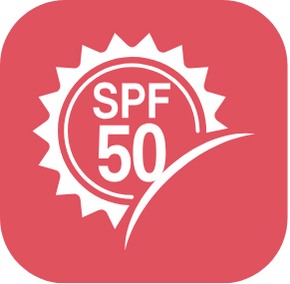
For SPF Claims (e.g., “SPF 30”, “Sun Protection Factor X”): If your product makes any Sun Protection Factor (SPF) claim, testing is mandatory, and the SPF value must be ≥ 2. As with the above claims, the SPF value must be tested using reproducible testing methods, including those that are outlined in US FDA 2012 or ISO 2010. As with critical wavelength testing, SPF results must be clearly documented in the FPS and align with the product’s label claims.
Provide Supporting Evidence: For Class III applications, additional evidence must be submitted to substantiate the product’s safety and/or efficacy, especially when making claims or adding ingredients not covered under existing monographs. The type and amount of evidence required will largely depend on the nature of the application and the specific health claims and medicinal ingredients.
Supporting data should be drawn from credible, peer-reviewed sources. Quality evidence typically includes, at minimum, two randomized, placebo-controlled clinical trials involving a sufficiently large sample size and an appropriate duration to demonstrate the intended effect. Depending on the claim and ingredient, additional acceptable evidence might include:
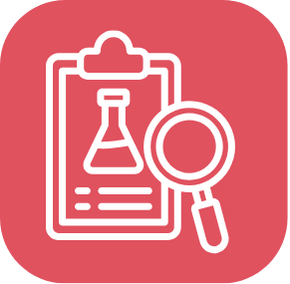
- Published meta-analyses or systematic reviews
- Pharmacopeial references (e.g., USP, European Pharmacopoeia)
- Authoritative scientific literature
- Post-market data (when applicable)
- Applicants should ensure that all supporting evidence is relevant to the specific dose, route of administration, directions of use, and target population described in the PLA.
Obtain NPN: If the submitted PLA package contains all the required documentation and is accepted by Health Canada, an eight-digit Natural Product Number (NPN) will be issued. This number confirms that the product has been reviewed and authorized for sale in Canada, and it must appear on the front panel of the product label before the product can legally be marketed.
The NPN indicates that the product has been assessed by Health Canada and found to meet the necessary standards for quality, safety, and efficacy. The NPN must appear on all product packaging and advertising materials.
It is important to note, however, that the issuance of an NPN does not constitute an endorsement or approval of the product by Health Canada. Manufacturers and responsible parties should use caution when communicating information relating to the NPN and must avoid language that implies Health Canada has “approved” or “recommended” the product. All marketing claims must remain factual, non-misleading, and aligned with the terms of the product licence. Terms like “approved by Health Canada” or “endorsed by Health Canada” are not permitted, even if the product holds an NPN.
Other considerations: In addition to obtaining a product licence, manufacturers and responsible parties must ensure that their product labels are fully compliant with Natural Health Product Regulations.
Other considerations include the following:
- Listing the NPN on the front-facing panel of the product.
- Ensuring that label information reflects the information appearing on the product licence.
- Ensuring that all label information and formatting meets the regulatory requirements and upcoming Plain Language Labelling guidelines. Information that must appear on the product label, including information that should be included in a standardized Product Facts table, includes:
- Medicinal ingredients
- Uses
- Warnings
- Directions of use
- Other information
- Non-medicinal ingredients
- Contact information
- Providing bilingual labeling in both English and French to meet Canada’s mandatory language requirements. Label discrepancies are one of the most common reasons for post-market compliance actions, so it is important that labels match exactly what was approved in the PLA. Learn more about additional labelling requirements for NHPs, including sunscreen products, in our overview of the Plain Language Labelling requirements.
Manufacturers that have not previously sold NHPs in Canada must also take steps to ensure proper site compliance. This includes:

Obtaining a Site Licence (SL) from Health Canada if they are manufacturing, packaging, labeling, or importing the product themselves
If using a third party, working with a licensed Canadian importer or distributor who holds a valid Site Licence and is authorized to conduct those activities
Learn more about licensing NHPs in Canada.
How to License a Sunscreen as an NPD
To license a sunscreen as a Non-Prescription Drug (NPD) under the Food and Drugs Act and the Food and Drug Regulations, the following steps are required:
Determine Eligibility: The first step is to confirm whether your sunscreen formulation qualifies for the NPD framework. Sunscreen products (other than NHPs) in Canada are regulated as drugs under the Food and Drug Act and must comply with the Food and Drug Regulations. To begin, verify that the active ingredients in your sunscreen are listed in Health Canada’s Drug Product Database (DPD) or in line with the Sunscreen Monographs. The Sunscreen Monographs outline the conditions for certain sunscreen formulations that do not require additional clinical data, provided they contain approved ingredients and meet specific criteria.
If your sunscreen contains ingredients not covered by the monograph, or if it makes claims outside those allowed by the monograph, additional evidence will be required to demonstrate its safety and efficacy. This may include supporting data such as clinical trial results or other scientifically validated evidence.
Prepare a Drug Identification Number (DIN) Application: Once eligibility is confirmed, the next step is to prepare and submit a Drug Identification Number (DIN) application to Health Canada.
The application should include the following:
- A detailed list of all active ingredients, including their concentrations and functions.
- A list of all non-medicinal ingredients, explaining their role in the formulation.
- Product claims related to sun protection, such as SPF ratings or UVA/UVB protection claims.*
- A draft label that complies with Health Canada’s requirements, including the DIN number, dosage form, directions for use, and cautionary statements. This label must be bilingual (in both English and French) to meet Canada’s language requirements.
- Finished product specifications (FPS) that ensure the product meets required quality and consistency standards.
* If your sunscreen makes any claims that fall outside the Sunscreen Monograph, such as higher SPF values or specific UVA/UVB protection, or if it contains ingredients not listed in the monograph, you will need to provide additional clinical trial data or published scientific studies to substantiate those claims.
Submit the Application to Health Canada: After preparing the complete DIN application, submit it to Health Canada for review. Health Canada will evaluate whether the sunscreen meets the required standards for safety, efficacy, and quality under the Food and Drug Regulations. The submission is reviewed for compliance with Health Canada’s monographs or any applicable regulations regarding non-monograph ingredients or claims.
Obtain a Drug Identification Number (DIN): Once Health Canada has reviewed the application and is satisfied that the sunscreen meets all necessary regulatory requirements, they will issue a Drug Identification Number (DIN). This eight-digit DIN confirms that the sunscreen is authorized for sale as a non-prescription drug in Canada. The DIN must be prominently displayed on the principal display panel of the product label before the sunscreen can be marketed.
Ensure label compliance: Once the DIN is issued, the product label must comply with all relevant Food and Drug Regulations and associated labelling requirements.
Label compliance includes ensuring the following:
- The DIN is displayed on the label.
- All claims (e.g., SPF, UVA/UVB protection) are accurately reflected in the labeling and supported by the information submitted in the application.
- The product label is bilingual, with English and French text.
- All necessary product information, listed in a standardized Drug Facts table, including:
- Active ingredients
- Uses
- Warnings
- Directions of use
- Other information
- Inactive ingredients
- Contact information
Non-compliance with labeling regulations can lead to regulatory actions, including recalls or product removals from the market, so it is critical to ensure the label matches the approved licence for the given product/ DIN. Learn more about the labelling requirement for NPD products visit Health Canada’s guide.
Site Licensing and Importation: If you are involved in manufacturing, packaging, labelling, or importing sunscreen products, your manufacturing facility must hold a valid Drug Establishment Licence (DEL) issued by Health Canada. This ensures that your operations comply with Good Manufacturing Practices (GMP) under the Food and Drug Regulations.
If you are importing sunscreen into Canada, you must hold a Drug Establishment Licence (DEL) and ensure compliance with Good Manufacturing Practices (GMP) requirements. If you are using a third-party manufacturer or distributor, they must also hold the appropriate DEL to handle manufacturing, packaging, and distribution. Importantly, companies outside of Canada cannot import directly unless they partner with a Canadian importer that holds a DEL. Non-resident importer must work with either a Canadian distributor or a Canadian fulfilment center that possesses a valid DEL in order to bring their product into the Canadian market.
Staying Compliant Post-License
Securing a licence for your sunscreen product is a major milestone, but the work doesn’t stop there. Ongoing compliance with Health Canada’s regulations is essential for keeping your product on the market and protecting your brand reputation. One of the most important aspects of post-licensing compliance is staying on top of safety monitoring. Companies are responsible for tracking and reporting any adverse reactions or product complaints. Establishing a clear system for gathering this information and reporting it to Health Canada helps ensure consumer safety and keeps your operations in good standing.

It’s also crucial to keep your product labelling accurate and up to date. Any changes to your claims, ingredients, or directions for use must be submitted for approval before they appear on packaging. Regular internal reviews of your labels can help catch inconsistencies before they become compliance issues. If you hold a Site Licence or a Drug Establishment Licence, make sure these are maintained, renewed on time, and that your facilities continue to meet Good Manufacturing Practices. If you’re working with third-party partners, confirm that they’re licensed and compliant as well. Staying ahead of regulatory updates and keeping thorough records of your product and operations will help you avoid setbacks and maintain long-term success in the Canadian market.
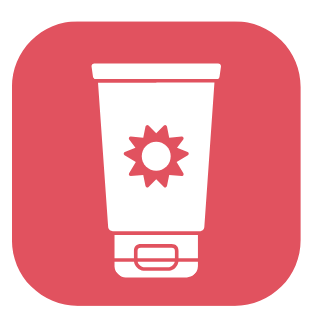
Final Remarks

Getting a sunscreen on Canadian shelves takes more than just a solid formula and stylish branding. It means navigating a complex regulatory landscape that puts consumer safety first. Whether your product is a mineral-based NHP or a chemical-based NPD, the process involves meeting strict standards around testing, licensing, labelling, and post-market compliance. These rules may seem daunting, but they are in place to ensure that what ends up in the hands of Canadian consumers delivers on its promises and protects their health.
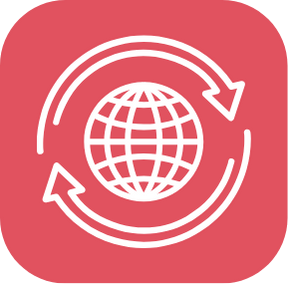
For international companies, it is especially important to understand the additional steps involved, such as partnering with a Canadian distributor or fulfilment center that holds a valid DEL. Health Canada does not just grant one-time approvals; they expect ongoing accountability. With careful planning, the right partnerships, and a solid understanding of the regulatory landscape, your sunscreen can make a successful and compliant entry into the Canadian market.

Your One-Stop Partner for Sunscreen Compliance
At SNI, we make it simple for sunscreen brands to meet Health Canada’s regulatory expectations. From reviewing product formulations and label claims to securing the right licences and ensuring GMP compliance, our regulatory team ensures your product checks every box before it hits the shelf.
What sets us apart is our on-site clinical testing facility, where we validate your sunscreen’s SPF, UVA, and broad-spectrum claims through in vivo studies. We also offer safety assessments—including irritation, sensitization, and phototoxicity testing—so you can confidently market a product that’s both compliant and consumer-safe. With SNI, you get full-spectrum support under one roof.
FAQ
Do all sunscreens sold in Canada need to be licensed by Health Canada?
Yes. All sunscreens must be licensed before they can be legally sold in Canada. Depending on the formulation and active ingredients, a sunscreen will be regulated either as a Natural Health Product (NHP) or a Non-Prescription Drug (NPD), each with its own licensing requirements.
How do I know if my sunscreen is an NHP or an NPD?
The classification depends on your active ingredients. Mineral-based sunscreens (e.g., those with Zinc Oxide or Titanium Dioxide) are typically considered NHPs. Chemical-based sunscreens (e.g., those with Avobenzone or Oxybenzone) are generally classified as NPDs. The claims you make, and the formulation as a whole also, influence the classification.
What licences are required to manufacture or import sunscreen into Canada?
You must hold a valid Site Licence (for NHPs) or a Drug Establishment Licence (DEL, for NPDs). Importers must also be licensed. Non-resident companies must work with a Canadian distributor, importer, or fulfilment partner that holds the appropriate licence.
What kind of testing is required to support SPF and UVA/UVB claims?
SPF claims and UVA/UVB protection must be backed by validated testing methods such as ISO or FDA-approved protocols. These results must be included in the product application and documented in your Finished Product Specifications (FPS).
What happens if I change the formula or label after getting licensed?
Any significant changes—such as modifying the active ingredients, dosage, or label claims—must be reported to Health Canada. In some cases, a new application or amendment may be required before the updated product can be marketed.
